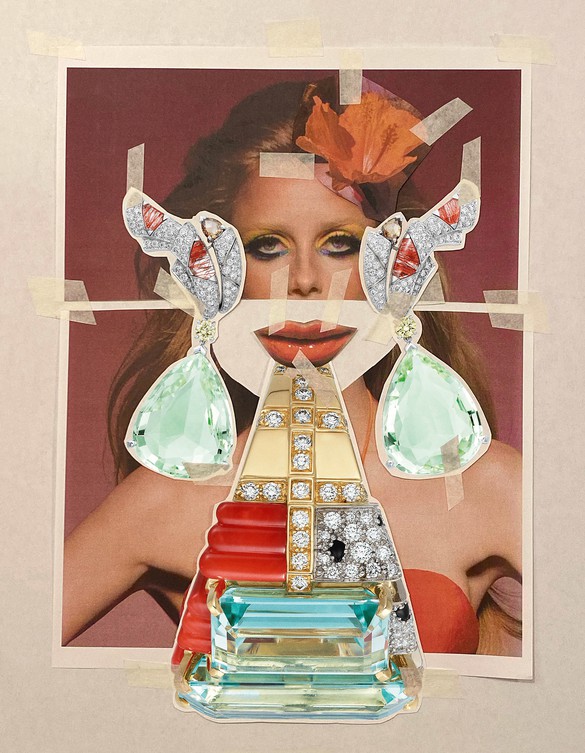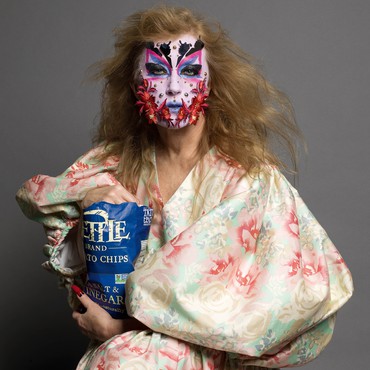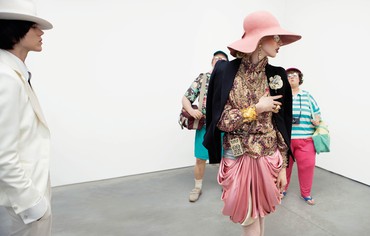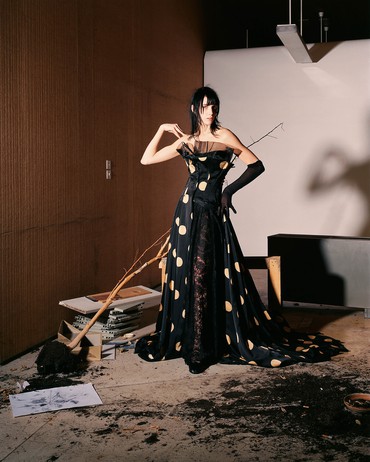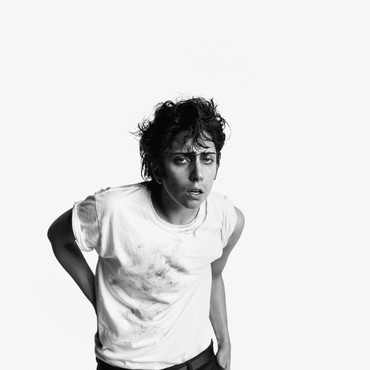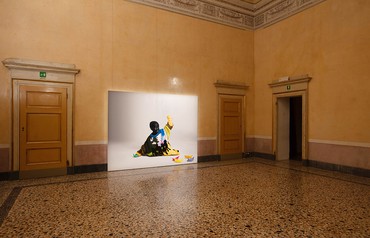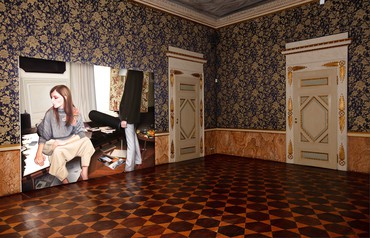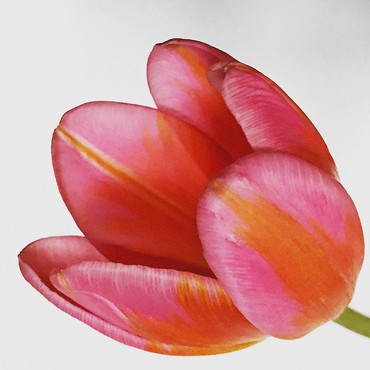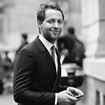
Derek Blasberg is a writer, fashion editor, and New York Times best-selling author. He has been with Gagosian since 2014, and is currently the executive editor of Gagosian Quarterly.
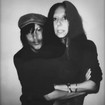
Since the early 1990s Inez and Vinoodh have created groundbreaking editorial photography for such publications as V Magazine, the New York Times Magazine, W Magazine, and American, British, French, and Italian Vogue. Their innovative approach, pairing visual seduction with provocative narratives, has also featured in campaigns and films for fashion houses including Balenciaga, Calvin Klein, Chanel, Dior, Gucci, and Valentino.
Derek BlasbergFashion and art isn’t a new idea, of course. We know the big references, like Coco Chanel asking Pablo Picasso and Jean Cocteau to create sets, or Gianni Versace incorporating Andy Warhol’s imagery into his designs.
Inez Van LaMsweerdeThe two disciplines have always informed each other and it’s always been an inspiration to go back and forth. There’s this cross-pollination; ultimately, you’re dealing with expressing the human condition.
Vinoodh MatadinWe grew up going to Amsterdam’s museums, like the Rijksmuseum, every week. It was part of our education and it was built into the primary-school curriculum. It’s the basis of our knowledge of art.
IVLFrom the influence of Dutch painting on composition to the colors of Van Gogh. The Dutch are proud of that heritage, and of the importance of the collections in the museums in Amsterdam and in all of Holland. It’s instilled in you at an early age.
DBWhen you were young, did you guys know you’d work in the arts in some capacity? Was that the plan?
VMYes.
IVLYes. My mom was a fashion journalist and later taught fashion design, fashion history, drawing, and painting in different art schools and academies. She was always around fashion and showed me everything. My whole life, she was always in Paris for fashion week—she saw Dior’s New Look show right after the war, we’d always have French Vogue at the house. It informed my ideas about how women should look and behave. I grew up with the pictures of Helmut Newton, Guy Bourdin, that whole generation. That was the imagery I was fed. There was never an alternative.
DBWhen did you pick up your first camera?
IVL1984.
DBHad you thought about being a photographer before that?
IVLNo, because the school where we met was a fashion-design school. I thought I was going to be a designer or an illustrator, but it turned out I kept taking pictures of my friends that looked great, and I’d style them and compose the photographs. Then, I was modeling in a show in Paris with Rineke Dijkstra, this phenomenal photographer, and she said to me, You should be taking pictures. She told me to quit even thinking about the design stuff, and I believed her. I applied to the Gerrit Rietveld Academie, where she was studying, and I got in.
DBIs that where you met Vinoodh?
IVLWe first met when I was a model for his fashion brand.
DBThat’s right, you were a fashion designer before you were a photographer. When did you first pick up a camera?
VMWhen I was sixteen, but I never thought I’d be a photographer. I always thought I’d be a fashion designer too. I remember seeing a book of [Yves] Saint Laurent’s exhibition [at the Metropolitan Museum of Art] in Manhattan, which was curated by Diana Vreeland, and I was like, This is it. This is fashion and art together, and this is incredible. That was my spark to go into fashion.
DBFor many people, Vreeland was the one who put fashion into an academic context. She invented the world of fashion exhibitions we see so much of today.
VMThat was a revolutionary show, especially for when it happened, in the early 1980s. She had so many incredible ideas and I loved them. Then, when I did my first fashion show, I asked several art people to be my models.
DBAnd that’s when you met?
IVLWhen he did his first collection, he asked me to take the pictures for the invitation. We worked together on the casting, the styling, all of it.
VMAnd we were like, Oh my God, we have so much in common.
IVLThat’s how the whole thing started. It was 1986.
DBBut how did you go from that collaboration to becoming artists together, and abandoning your fashion line?
VMWhen we went to New York in 1992 for PS1.
IVLWe were artists in residence at PS1 and Vinoodh gave up his whole designing thing.
DBWas that hard to do?
VMNo, because I wanted to be with Inez. I felt like, Let’s go to New York, let’s do this!
IVLAnd very quickly, we just started to make everything together.
VMAt first, Inez was working on my things, and I was working on her things, and it was separate credits. Then we were like, Let’s just do it all together.
DBIn many ways it’s become easier now to be fluid with working relationships and even genres. There was a moment when you were a photographer, or you were an artist, or you were a model, or you were a designer. Now, you guys are artists. Sterling Ruby is now a fashion designer. Virgil Abloh is all over the map. There are people who do many things now.
IVLI clearly remember being shocked in the early 1990s when all of a sudden artists started turning up in Vogue’s best-dressed lists. I was like, What’s going on? Why are they now part of this? For so long, people thought it was selling out or a dirty secret. Then, slowly, that started to change, and thank God all those lines are blurred now.
VMWhen we started, it was hard because the fashion world said we were artists and the art world said we were too fashion. I think that’s why we now have this feeling of not caring what you call us.
IVLWe deliberately try to stay on that middle line between the two worlds. That’s always been the part that’s the most interesting for us.
VMAnd keeps us independent.
IVLWe feel independence in the images we’re making. We’re questioning both sides and embracing both sides, all at once. When a photograph has a clothing credit underneath it, it’s a fashion picture, and when the name of the person in it is mentioned, it’s a portrait. When I give it a cynical title, it’s an art piece. For us, the context is interesting, and playing with the notion of it. Especially when we started, there was irreverence. When we began shooting for Vogue, we felt like it was a joke, an experiment. We were thinking, Let’s see what this feels like. When we were shooting for The Face in the beginning, we wanted to get those big brands in but as a joke, as an experiment, because we didn’t take it seriously.
VMThe magazine told us, You don’t have to do that, we’re The Face, we don’t have advertisers.
IVLAnd we explained to them that we liked that. We liked the connotation of what it said. We like to subvert from the inside. At some point we said to each other, How long are we going to stay cynical? Does it feel like we need to embrace both worlds more, and actually go fully into both worlds at the same time?
VMAt that moment, Yohji Yamamoto asked us to do his campaign. That was like an art form for us, because we had total freedom to do what we wanted. We had no discussion with the designer, we just did the campaign. In those days that took two to three months from start to finish. It was a long, slow process.
IVLWe’d see the show, react to it—
VMAnd then we’d see Yamamoto’s reaction to our reaction. It became an entire dialogue.
DBWhat I liked about your pictures in The Face was that they seemed to take things that everyone else thought was precious, like couture dresses, and treat them unpreciously.
IVLThat’s because we felt like outsiders looking at that world. I remember clearly when we started shooting for Vogue, our favorite thing to do was sit in the office of the bookings director and just observe everyone. We were absorbing, learning, trying to understand that American Vogue woman.
VMWhere does she come from? And who makes these rules that they all follow? Why are they not free?
IVLIt was definitely educational. Also, in a good way, we didn’t realize what a big deal it was to work for Vogue. We were just laughing, and thinking, What’s going on?
DBYour exposure to all this fashion, drama, excitement, rules—did that inform the way you created your pictures?
IVLYou start to learn more about stereotypes.
DBBy stereotypes you mean trends. I never realized that they’re the same thing!
IVLYes, exactly. Status symbols! That’s the language of clothes. You’re expressing through clothes. Today, for example, you’re an intellectual because you’re wearing a New Yorker T-shirt.
DBWow! For the record, this T-shirt came with the subscription!
IVLThat’s what I mean. You have a subscription. You read it. Everything is a status symbol.
VMEven if you’re not in fashion, it’s a statement.
IVLEvery person who wakes up in the morning has to ask, on some level, Who do I want to be today? Do I have a meeting, or am I on mom duty, or am I trying to impress a date?
VMAnd the codes can be learned from your parents, your grandparents, from old movies you’ve seen or books you’ve read.
IVLA Rolex means one thing, a Cartier watch means something else, a white shoe something different from a black shoe. Nostalgia is such a big part of fashion. That’s why fashion keeps changing, because people in it are younger all the time. They bring in their inspiration from when they were sixteen, eighteen, and finding their own identity, knowing which music they listen to. I think music is the biggest influence, actually. We long for those formative times and we bring our nostalgia with us.
VMWe find it endlessly fascinating, but it always comes down to this nostalgia element, and a mash-up of different elements into something new. It’s the same thing for art: a good art piece reminds you of the past, but in the past you never saw it the way you’re seeing it now. That’s why it triggers something in you and you understand why it’s so good.
IVLYou feel it.
DBTell me about your process. I’ve been on the set with you, but how do you describe the way you work to someone who hasn’t?
IVLIt’s very easy. We shoot together at the same time. I usually direct the person, and that person usually gets directed to look in my lens. Vinoodh is like a voyeur and walks around the situation, and finds his angles to get a different side of what’s going on in front of my lens. What’s exciting for both of us is that we look at the same thing but make very different images of it. Once we’re in the editing process, it’s always like, Oh, what did you do?
VMWe throw everything on one big pile and we don’t know who took what anymore. We also try to really prepare ourselves, but then the moment you’re in the studio, you have to improvise.
IVLThat’s actually the beauty of taking a fashion image: a large part is improvisation. Much more than with making a feature film. It’s really close to working as an artist, where no one’s telling you what to do and you’re relying mostly on your own thing. It starts with the girl, the hair and makeup, the clothes, but after that, it’s whatever works. That’s the most exciting part.
VMThe last time we did a portrait, they said, Oh my god, you guys are people whisperers. You know how to seduce me and make me relax!
IVLThat’s how we find the person’s most heroic moment.
VMSometimes people will say to Inez, I want to record your voice and play it every morning!
IVLPart of it is concentration, too. Whether it’s a portrait session or a fashion picture, the whole team has to line up their energy to the one beautiful moment where the subject looks great. I always imagine it as these arrows going to this person, who just grows bigger and bigger and bigger.
DBYou cross so many different categories or genres: There’s fashion work, obviously; I love the flowers in the still lifes; the stuff around politics and activism is something else.
VMYes, speaking of activism, let’s talk about our work with Double Dutch, which is a social impact gifting platform.
DBYes, I see all these cool images and messages on your Instagram. Tell me about it.
IVLDouble Dutch is a platform where we aim to change the way we communicate with gifts and bring attention to the charitable causes we stand for. It’s an innovative and creative way to make everyday connections with people simple and more meaningful.
DBHow does it work?
VMUsers choose from a library of virtual greeting cards curated by iconic and emerging artists from around the world, and then customize them with a personal message and send them to a friend with a donation to their charity of choice. It is our way to leverage our extensive network of artists, curators, celebrities, and designers for a good cause and bring exposure and income to young creators and artists while empowering them to change lives in return with the donations. We are making giving cool.
IVLThe artist relationships we’ve formed through the Double Dutch community have been especially rewarding for us. When we see the artists’ careers take flight as a result of the exposure on our platform, it’s beautiful. Our current co-curator is Francesco Bonami, and partnerships for special card sections with brands like Calvin Klein and worthy charities are in the works.
DBWhen you’re doing different types of work, is there a different process?
VMThey’re all part of life.
IVLIt’s all an expression.
VMOur culture. We’re reacting to all the things that happen to us. Our last big art show was in Milan, and we decided to make ten big paintings of our digital work.
IVLWe had Colossal, a company that creates enormous billboards on the street, to help us realize the works. The show was at the Palazzo Reale and they asked us to do a retrospective. The space is super ornate and decorated —
VMIt’s a hard place to make a photograph stand out.
IVLWe realized that at some point these rooms were living rooms. They were where people used to live. Why not bring the outside inside? Go full Pop art. We’ve always viewed our billboards for brands as art in public space. We said, Let’s take that process and ask the guys from Colossal to paint our works. It looked fantastic.
VMNowadays, because of the Internet, most people only see pictures on a small square, their phone screens. It’s like an inch by an inch. When they see the real thing, it’s a whole different thing.
DBIt’s interesting you say that, because I do think there’s something glorious about these big images, and it’s probably because I spend so much time with little images.
IVLYeah, you want to be overwhelmed by it—
DBDrowning in the picture—
IVLDrowning in the beauty of it! Maybe you can only really see the image when you take a couple of steps back. We really miss that.
VMYou can’t underestimate scale.
IVLBillboards are a major way of communicating and they really can change culture. That Milan show was like a Pop art moment, but as a retrospective. It’s the same when we exhibit in galleries: seeing a person’s face so much larger than life is exactly the effect that we want. It’s like you said, drowning in it, and being overwhelmed by it, and by its beauty or its grotesqueness.
DBI’m always moved by your large-scale flower images.
IVLYes, bigger than you would ever experience flowers in real life. It becomes an abstract painting for us. That’s how we view the experience of our flower images.
VMWe also see them as self-portraits. Because in the end, everything you make is about self-reflection.
DBLast question, and it’s a tricky one: Is fashion art? And is art fashion?
IVLI think not [laughter]. No. No would be my answer.
DBOkay, perfect.
VMBut they do feed each other.
IVLBut they’re not the same, and I wouldn’t want them to be, either.
VMDo people want them to be the same?
IVLIt doesn’t need to be one or the other. They are what they are. And I think we find ourselves in the happy middle of it.
VMWhere we grew up, in Amsterdam, the economy was booming in the seventeenth century, people had money and they wanted to have a painting of themselves. So they went to Rembrandt, asked for a painting, and paid him a lot of money for it.
IVLAt that moment, it was a fashionable thing to do, and they were wearing the height of fashion. But today, we see it as art.
Artwork © Inez & Vinoodh
